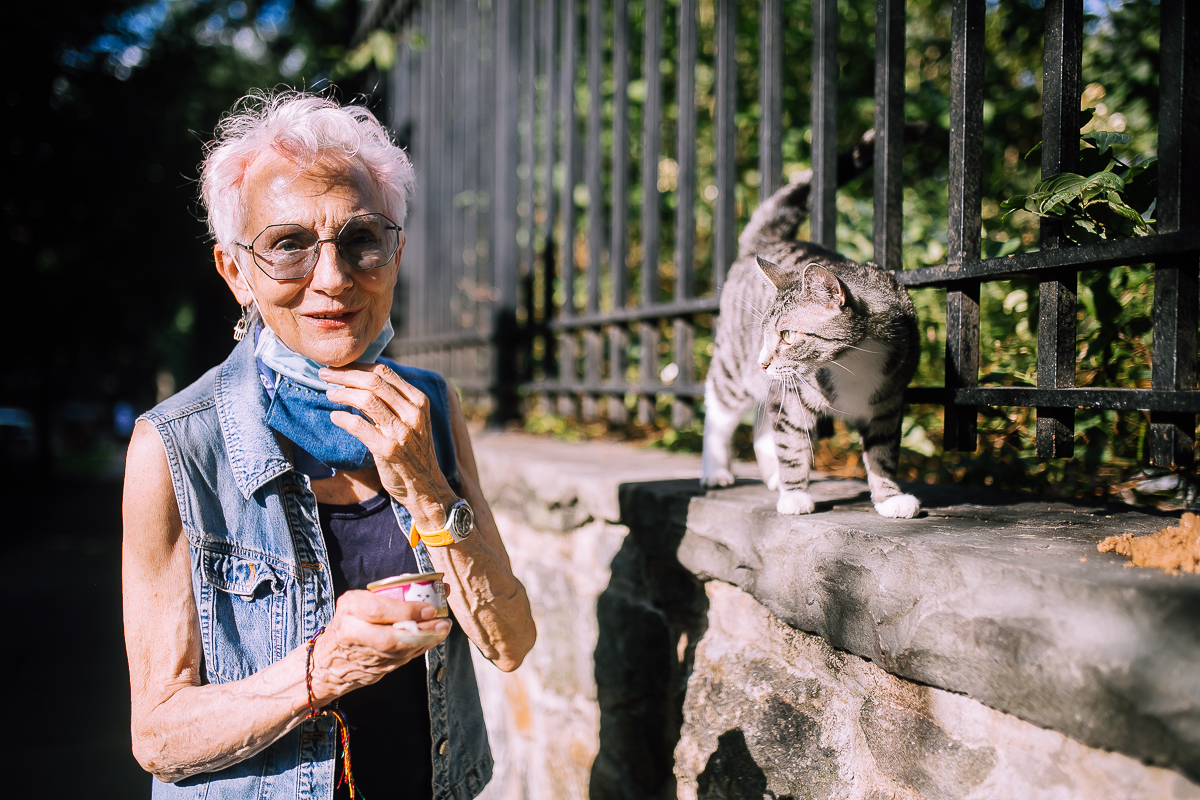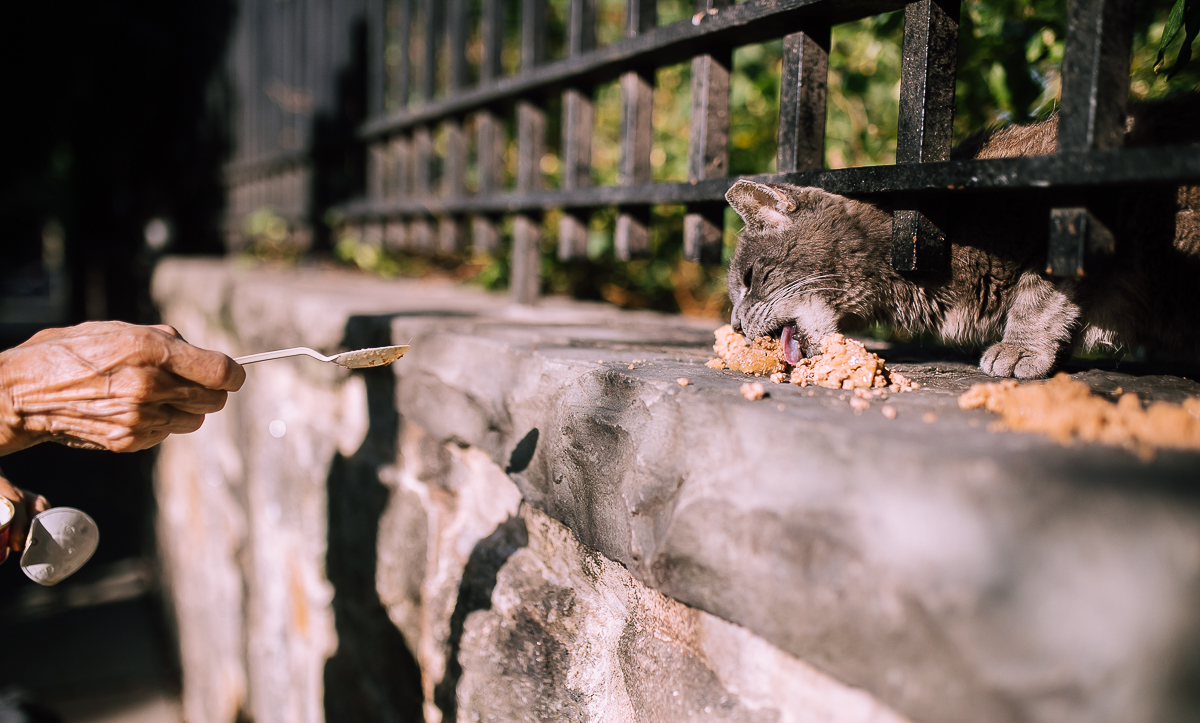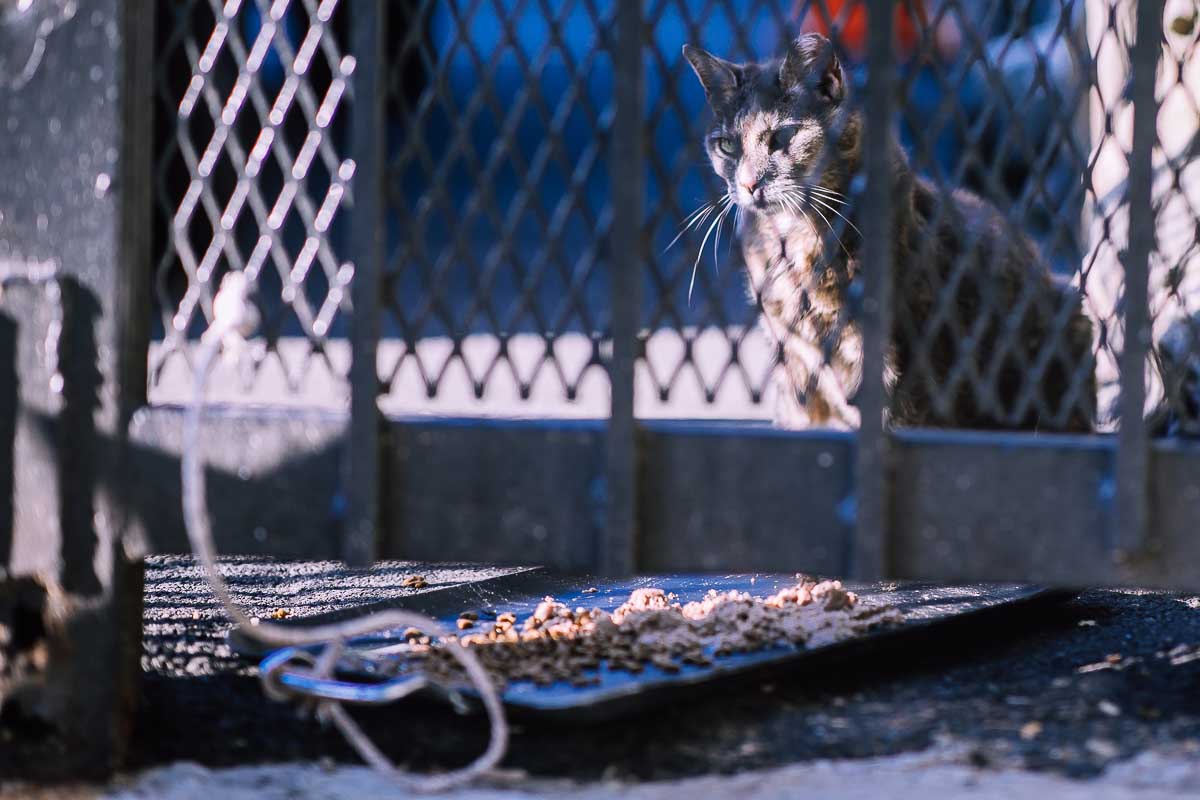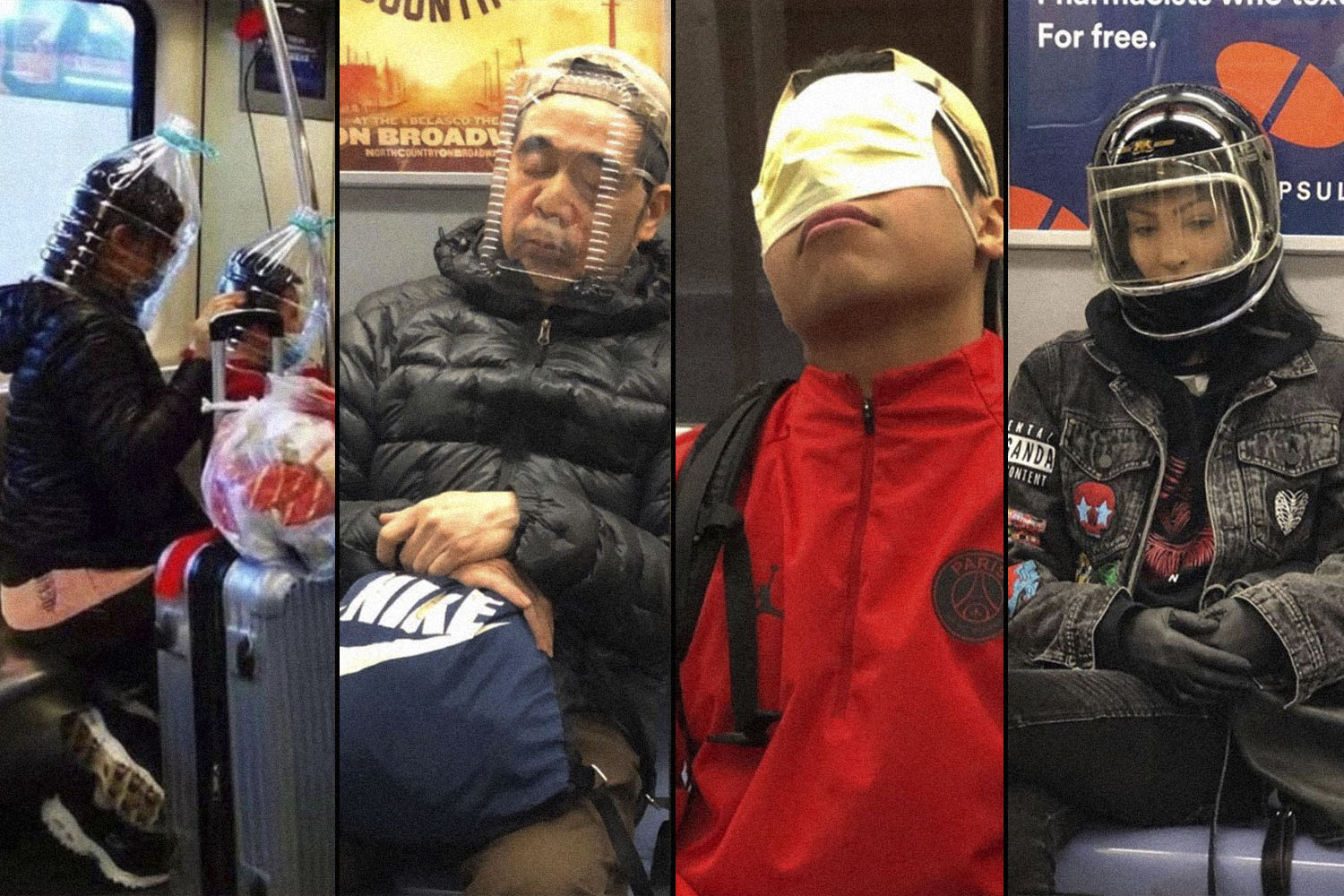To the officers at Edgecombe Correctional Facility, the scene must have been remarkably strange, even by New York City standards.
It was June of 2013, and just outside the prison on West 163rd Street in Washington Heights stood a tiny elderly woman with big glasses and dyed streaks running through her short gray hair. In her arms, she held an enormous trap, but this was not the strange part. The strange part was that she was knocking, insistently, on the prison’s front door.
To Sheila Massey, knocking seemed like the natural thing to do, given the urgency of the matter. Eventually, she was buzzed in and led through an impossibly heavy set of double doors. When she reached the reception desk, the puzzled officers asked what they could do for her.
She was there, Massey explained, to talk about cats.

For the first six decades of Sheila Massey’s life, she didn’t spend much time thinking about felines. Born, raised and educated in Memphis, Tennessee, Massey started working as a computer programmer for DuPont directly out of college, a job that took her from her hometown to Virginia and, eventually, overseas. After a decade working abroad, Massey returned to the United States, settling in New York City and taking a job with Exxon. By the mid-’80s, she was fed up with corporate culture and struck out on her own, working for 20 more years as an independent auditor before retiring in 2006.
Newfound time led to a newfound observation. In Massey’s home neighborhood of Washington Heights, stray cats were running rampant. She was smitten with the tattered felines and, on a whim, started rescuing them.
“I was taking them in and trying to help them out and find new homes for them,” says Massey. “Kind of on a casual basis … and then I found out about Trap-Neuter-Return.”
Trap-Neuter-Return (TNR) is a widely used practice aimed for controlling feral cat populations. Cats are trapped by professionals or trained volunteers, taken to a veterinarian for spaying/neutering and vaccination, and then returned to the same area where they were found. There they resume life, minus the ability to breed. In New York City, where feral cats number in the tens of thousands, TNR is a critical, privately funded service.
Massey quickly embraced TNR and progressed from volunteer to volunteer instructor. As she immersed herself in the work, she realized that there was another, equally crucial step that follows: colony management. It’s a straightforward concept. When colonies of rehabilitated cats are sheltered and consistently fed in specific areas, they stop wandering, foraging and irritating people. If Massey, along with her fellow volunteers, could maintain shelters and provide strictly rationed meals — to prevent other hungry animals from swooping in — the cats’ quality of life would skyrocket. If a new, curious cat happened to show up, it too would be put through the TNR process.
But who in their right mind would be willing to play host to a cluster of feral cats on their property? Turns out, a lot of people, all intrigued by a tantalizing byproduct of maintaining a colony.
“The cats stay put and it keeps the rats away,” said Massey. “I don’t think you have to like cats to realize that they are nature’s solution to one of our problems.”

Cats may be part of the solution, but in New York City’s war on rats, there is no panacea. To borrow a line from The Wire, “You can’t even call this shit a war. Wars end.”
Consider the scope of the issue. According to a 2014 analysis of rat sightings reported via 311, there are approximately two million rats skittering across the five boroughs. And these, according to the author of the study, are the rats that we can see.
The governmental effort to reduce the rat population in New York City has been unrelenting and remarkably ineffective. There was the poisoning strategy of former Mayor Rudolph Giuliani’s administration, the dry ice campaign of current Mayor Bill de Blasio’s office, and — brace yourself — the drown-them-in-alcohol-oil-and-vinegar method championed by Brooklyn Borough President Eric Adams. Despite these creative municipal efforts, rat sightings persist. From 2010 to 2014, 311 received an average of just under 11,000 complaints per year. From 2015 to 2019, that average eclipsed 17,000. Now, pandemic-fueled budget cuts are set to remove $2.2 million in funding from the Department of Sanitation’s 2021 anti-rat allocation, another blow to the city’s beleaguered effort.
“In short, rats love city budget hardships,” Bobby Corrigan, a legendary pest management expert, told The City.
The Bureau of Veterinary and Pest Control Services — the division of the Department of Health and Mental Hygiene (DOH) tasked with fighting the rat problem — preaches the importance of personal responsibility. The bureau offers free Rat Academy courses to New Yorkers, and its 16-page prevention brochure reads like a declaration of war. Step Five, forebodingly, is entitled “Wipe Them Out.”
Sheila Massey is not a fan of this brochure, particularly its last page.
“At the end of this brochure they deem that it’s a myth that cats can control rats,” said Massey.
More specifically, the brochure reads:
Myth: Cats, dogs, hawks and other animals help control city rats.
Fact: They may kill an occasional rat, but they can’t keep up with rats’ rapid breeding rates. Only people can make a difference!
Cats may not be effective killers of rats, but, in Massey’s view, they must play a part in the city’s deterrence strategy, because they unequivocally keep rats away from the areas they occupy. She knows this because she’s made it happen.

After pitching the cat colony project to prospective hosts in Washington Heights, Massey signed on four participants: the Morris-Jumel Mansion, Iglesia Pentecostal Monte Calvario, the Morris-Jumel Community Garden and the Edgecombe Correctional Facility. The four locations, all situated between West 160th Street and West 164th Street, comprised a perfect geographical test zone: four cat colonies transplanted directly on top of four rat habitats to contest a real-life game of Tom and Jerry.
The rats didn’t last long. On 162nd Street, in particular, Massey received word that the rat population had vanished.
“Anybody who lives on that street will tell you, they can walk home anytime, night or day, and they never, ever see a rat,” said Massey.
At the prison, the story was the same. The staff, which had been bracing for a rat onslaught to arise out of a nearby excavation project, reported no issues.
Massey started to think bigger. She discovered that in Chicago, Philadelphia and Washington D.C., successful “working cat” programs existed, which assigned feral felines not suitable for homes to businesses with rat problems. The logic was the same: if feral cats could successfully patrol outdoor spaces, they surely could do the same indoors, where their fear of humans would keep them away from employees and customers.
Massey got to work. Inspired by a success story in Chicago, she started pitching the working cats concept to New York City’s breweries, whose large stores of raw materials make them rat hot spots. To her delight, four facilities agreed to take on cats.
“Basically as soon as they showed up, there hasn’t been a problem,” said Megan Wilson, COO at Torch & Crown Brewing Co., which welcomed three cats to its Bronx production facility in May. “It was almost immediate impact.”
The brewery, which had experienced an influx of pests migrating from recently shuttered warehouses nearby, was now exclusively the cats’ turf.
“What I didn’t even anticipate is that they don’t even really need to be hunters,” said Wilson. “Their presence has made it so that there is barely anything to hunt.”

Massey’s program continues to flourish. Working with Animal Care Centers of NYC — which identifies the cats best suited for businesses — she has placed 11 felines in local establishments since December. Massey has even come up with a catchy name for her program: Hard Hat Cats.
Despite her success, Massey has struggled to parlay it into any form of support from the city government. In a statement emailed to InsideHook, Department of Health spokesperson Michael Lanza, referencing the use of feral cats as a deterrent to rats, wrote, “We do not recommend [it], however we provide resources to residents that are interested,” linking to the DOH’s TNR webpage.
In Massey’s eyes, the DOH is ignoring a clear, documented solution and doing a disservice to New Yorkers.
“You don’t need to explain this to a bodega owner, yet somehow the DOH is unwilling to even acknowledge hard data,” says Massey. “At a minimum, this is just a parallel effort, and why wouldn’t you inform the citizenry that they have this option?”
Massey has no plans to relent. She says she intends to expand her operation into other industries, recruit top-notch cat rescuers and continue to spread the word about her program. In this challenging time, she feels that she’s made a small difference.
“The cat employment rate is booming,” says Massey.
Correction: An earlier version of this article cited a study from Michael H. Parsons on the space-use patterns of rats in urban areas. After discussing the conclusions of the study with Dr. Parsons, we have decided to omit its inclusion.
This article was featured in the InsideHook NY newsletter. Sign up now for more from all five boroughs.






















